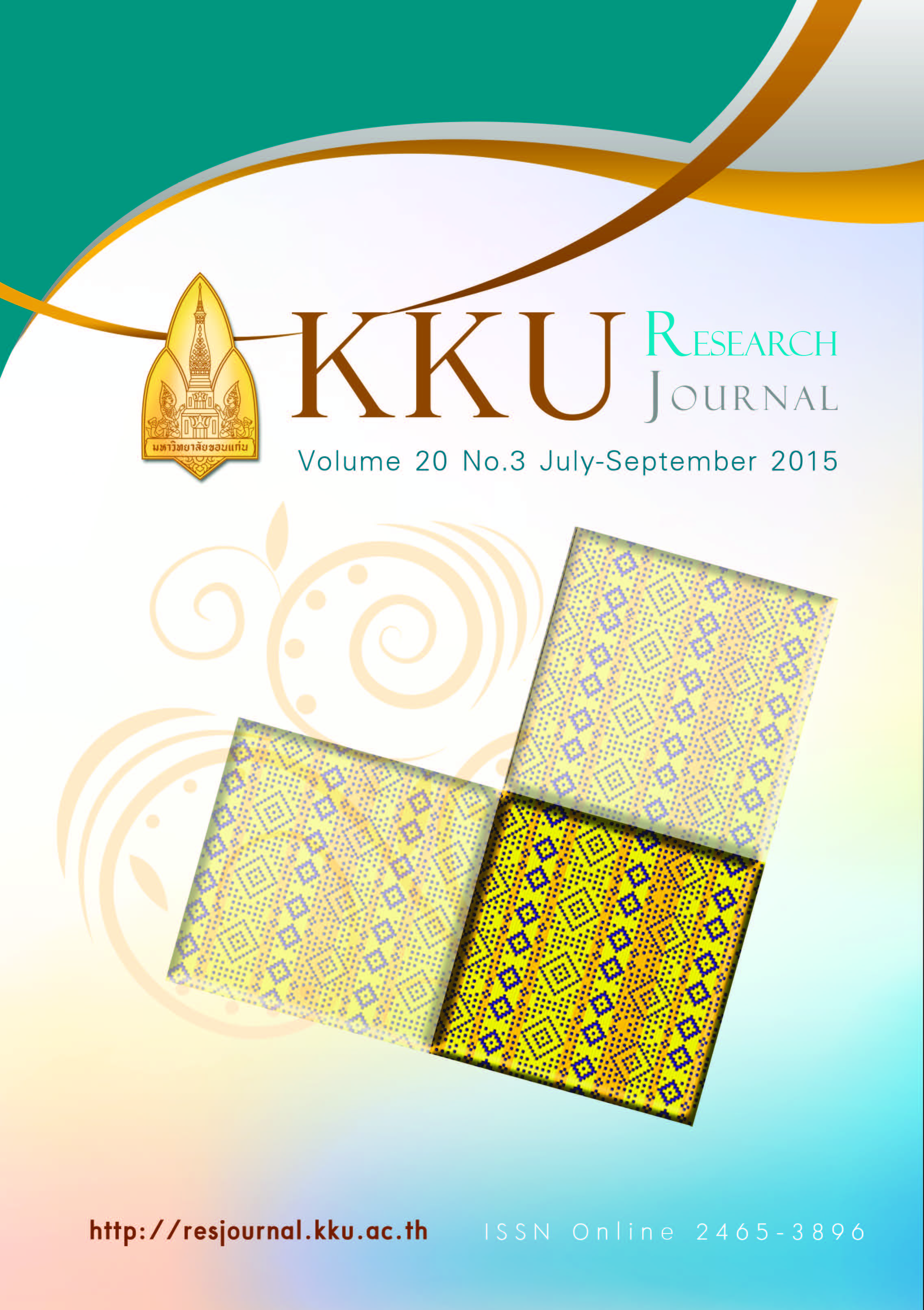Methane fluxes and rice yields as a function of sulfate fertilizer with incorporated rice stubble
Main Article Content
Abstract
A trial was conducted by applying different sulfate (SO4) rates on methane (CH4) emissions and grain yields (GY) in a field with recently incorporated rice stubble (IRS), 7.5 t ha-1. Ammonium phosphate SO4 fertilizer (42% SO4) was applied at the rates of 0, 50, 100, and 210 kg SO4 ha-1. The whole field was kept flooded with irrigation water. The results showed that the impact of SO4 on CH4 emissions weakened through the stages of rice growth. High daily CH4 fluxes at the reproductive stage governed the quantities of seasonal CH4 emission (SME), and led to a high ratio of SME/IRS. Only the highest rate of 210 kg SO4 ha-1 could reduce SME by 66.9%. The highest GY was 4.08 t ha-1 at 100 kg SO4 ha-1. The whole experiment gave high values of SME/GY and SME/IRS. To reduce CH4 emission without adverse effects on GY, split application of SO4 at 100-155 kg SO4 ha-1 with the last application preferably during the late tillering stage should be tested, along with incorporating rice stubble into the soil immediately after harvest.
Article Details
References
[2] Minami K, Yagi K. Mitigation of methane emissions from rice cultivation. Global Environ. Res. 1998; 2: 15-19.
[3] Ro S, Seanjan P, Tulaphitak T, Inubushi K. Sulfate content influencing methane production and emission from incubated soil and rice planted soil in Northeast Thailand. Soil Sci. Plant Nutr. 2011; 57: 833-842.
[4] Rath AK, Ramakrishnan B, Sethunathan N. Effect of application of ammonium thiosulphate on production and emission of methane in a tropical rice soil. Agri. Ecosyst. Environ. 2002;90: 319-325.
[5] Osotspa Y. Soil quality for agriculture. Printed by Soil and fertilizer society of Thailand, Bangkong, Thailand, 2014 (in Thai).
[6] US Department of Agriculture. Keys to Soil Taxonomy, 8th edn. Pocahontas Press, Virginia, USA; 1999.
[7] Saenjan P, Tulaphitak D, Tulaphitak T Tungchupong S, Jearakongman S. Methane emission from Thai farmers’ paddy fields as a basis for appropriate technology. 17th World Congress of Soil Science, 14-21 Auguest 2002, Thailand.
[8] Supparattanapan S, Saenjan P, Quancil C, Maeght JL, Grunberger O. Salinity and organic amendment effect on methane emission from a rainfed saline paddy field. Soil Sci. Plant Nutr. 2009; 55: 142-149.
[9] Zhang L, Yu D, Shi X, Weindorf D, Zhao L, Ding W, Wang H, Pan J, Li C. Quantifying methane emissions from rice fields in the Taihu Lake region, China by coupling a detailed soil database with biogeochemical model. Biogeosci-ences.2009; 6: 739-749.
[10] Minamikawa K, Sakai N, Hayashi H. The effects of ammonium sulfate application on methane emission and soil carbon content of a paddy field in Japan. Agric. Ecosyst. Environ. 2005; 107: 371-379.
[11] Minami K. Meth[12] Denier van der Gon HA, Van Bodegom PM, Wassmann R, Lantin RS, Metra-corton TM. Sulfate-containing amendments to reduce methane emissions from rice fields: mechanisms, effectiveness and costs. Mitig. Adapt. Strategies Glob. Change. 2001; 6: 71-89.
[13] Sass RL, Fisher Jr FM. Methane emissions from rice paddies: a process study summary. Nutrient Cycling in Agroecosystems. 1997; 49: 119-127.
[14] Mitra S, Aulakh MS, Wassmann R, Olk DC. Triggering of methane production in rice soils by root exudates: Effects of soil properties and crop management. Soil Sci. Soc. Am. J. 2005; 69: 563-570.
[15] Kerdchoechuen O. Methane emission in four rice varieties as related to sugars and organic acids of roots and root exudates and biomass yield. Agric. Ecosyst. Environ. 2005; 108: 155-163.
[16] Revsbech NP, Pedersen O, Reich-ardt W, Briones A. Microsensor analysis of oxygen and pH in the rice rhizosphere under field and labo-ratory conditions. Biol Fertil Soils. 1999; 29: 379-385.
[17] Dobermann A, Cassman KG, Mamril CP, Sheehy JE. Management of phosphorus, potassium, and sulfur in intensive, irrigated lowland rice. Field Crops Research. 1998; 56: 113-138.
[18] Xu H, Hosen Y. Effects of soil water content and rice straw incorporation in the fallow season on CH4 emissions during fallow and the following rice-cropping seasons. Plant Soil. 2010; 335ane from rice production. Fert. Res. 1994; 37: 167-179. : 373-383.


